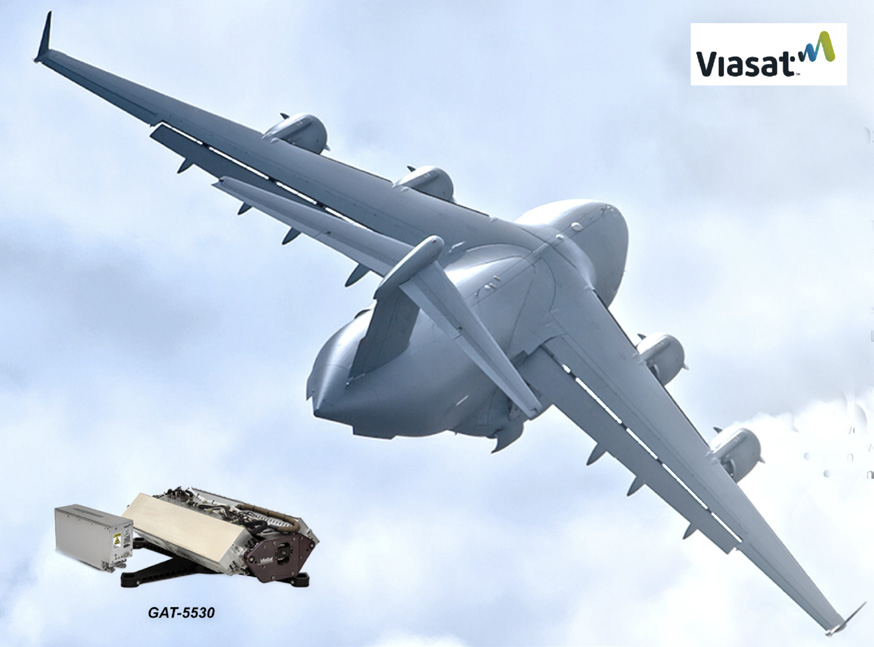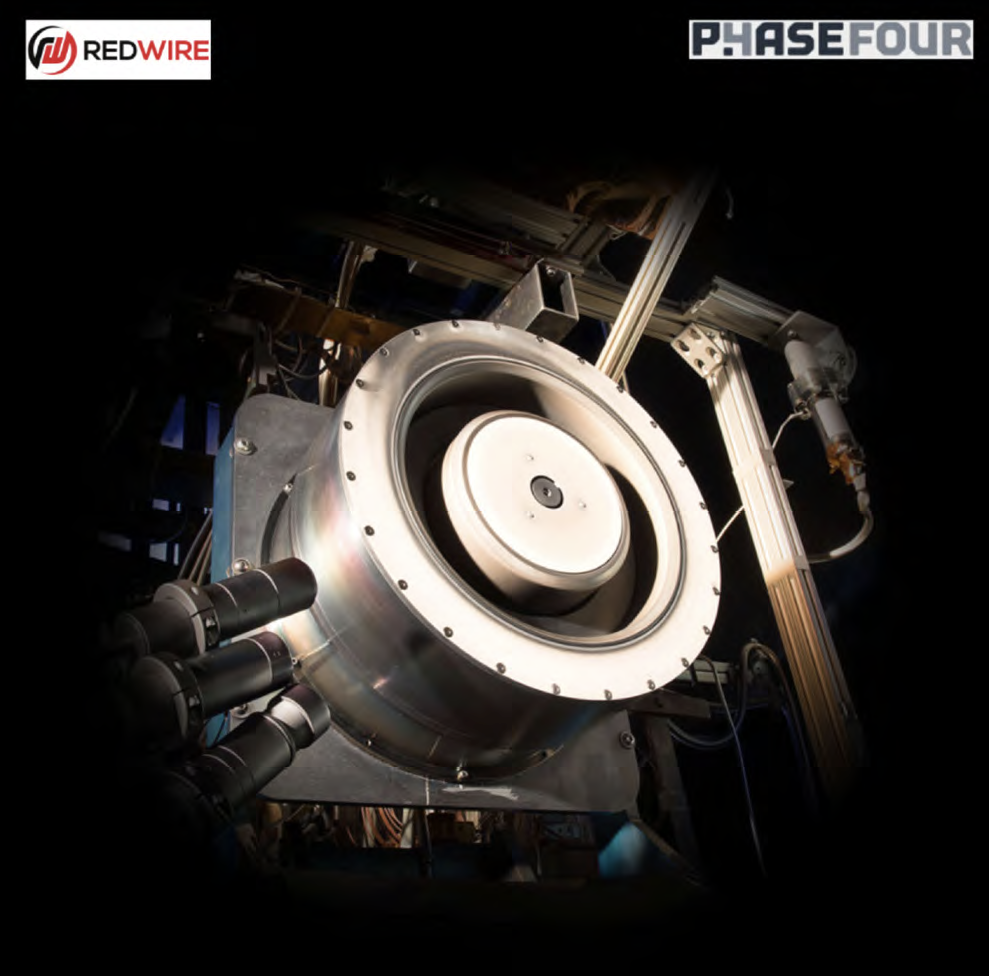Space Development Agency’s layered network of military satellites will now be known as “Proliferated Warfighter Space Architecture”
The Space Development Agency’s (SDA) resilient layered network of military satellites and supporting elements is now the “Proliferated Warfighter Space Architecture” or PWSA.

The architecture, formerly known as the “National Defense Space Architecture,” was renamed to more specifically reflect the agency’s mission to deliver needed space-based capabilities to the joint warfighter to support terrestrial missions through development, fielding, and operation of a proliferated Low Earth Orbit (pLEO) constellation of satellites.
The spiral development and fielding of SDA’s mesh network has matured successfully, but the constellations’ original name did not accurately convey its current scope and purpose.
The new constellation name became effective on January 23, 2023.
Now integrated within the U.S. Space Force, SDA continues the integration of its space acquisition and operations into the overall national defense hybrid space enterprise, including pLEO advancements to support no-fail missions such as end-to-end missile warning, missile tracking, and missile defense.
Maintaining technological and military advantages in space for the warfighter requires developing a resilient hybrid architecture through an integrated diversification of orbits and proliferation of satellites.
The constellation name change will have no impact to the SDA mission. Leveraging speed, delivery, and agility, SDA will continue to quickly deliver needed space-based capabilities to the joint warfighter to support terrestrial missions through development, fielding, and operation of the PWSA.
Scout Space to join DARPA’s BRIDGES consortium for space superiority
Scout Space Inc., an in-space observation service provider focused on space security and Space Domain Awareness (SDA), has been selected by the Defense Advanced Research Projects Agency (DAPA) to join the Bringing Classified Innovation to Defense and Government Systems (BRIDGES) Consortium.

DARPA selected Scout based on the company’s proposal outlining its approach to collaborating on “Advancing Autonomous In-Space Threat Response for Space Superiority.”
The BRIDGES Consortium aims to mitigate the timelines that can potentially limit the Department of Defense‘s (DoD) ability to rapidly procure and employ innovative technology. The Consortium will sponsor Scout for a facility clearance, providing access to classified work areas and networks.
Additionally, Scout will participate in quarterly, in-person meetings to interact with government personnel at classified levels.
“Resilient flight software is imperative to maintaining space superiority and a competitive advantage over adversaries, ensuring seamless operations and bolstering strategic capabilities,” said Philip Hover- Smoot, CEO of Scout Space. “We are excited to support the development of novel technologies for the Department of Defense and look forward to being a strategic partner for the U.S. Government. Scout is committed to navigating the intricacies of space superiority while overcoming the technological challenges that define this critical frontier. We aim to provide solutions that lay the foundation for future advancements, ensuring a resilient and adaptive framework for maintaining dominance in the space domain.”
For more information on the DARPA BRIDGES initiative, visit DARPA BRIDGES Initiative.
Scout Space was founded in 2019 with the mission to enable a new era of space safety and transparency.
Scout’s in-space products and services, first launched in 2021, allow spacecraft to see and understand things around them. The orbital distributed sensor network developed by Scout will significantly improve Space Domain Awareness (SDA) and ensure responsible use of the space environment. The company is a Techstars, MassChallenge, and venture-backed startup with ongoing government and commercial contracts. Scout holds the Established® 2021 Startup of the Year® title.
Astra closes the firm’s take-private transaction
Astra Space, Inc. (Nasdaq: ASTRA) has successfully closed the firm’s move to take the company to private ownership.

Under the terms of the definitive agreement for the transaction (the “Merger Agreement”) that was previously announced on March 7, 2024, Apogee Parent, Inc., (“Parent”), an entity formed by Chris Kemp, Astra’s co-founder, chief executive officer and chairman, and Dr. Adam London, Astra’s co-founder, chief technology officer and director, will acquire all of the outstanding shares of the
Company’s Class A common stock, par value $0.0001 per share (the “Class A Shares”) not already owned by it for the right to receive $0.50 per share in cash, as more fully described in the Merger Agreement.
With the completion of the take-private acquisition, the Class A Shares ceased trading prior to the opening of trading on July 18, 2024 and will no longer be listed on the Nasdaq Capital Market (“Nasdaq”).
The Company also intends to make the applicable filings with the U.S. Securities and Exchange Commission (the “SEC”) to suspend its periodic reporting obligations and to terminate the registration of the Class A Shares underlying the Company’s active registration statements.
As previously disclosed, (i) on April 17, 2024, the Company received a deficiency notice from Nasdaq that the Company is not in compliance with Nasdaq Listing Rule 5450(a)(1) because the per share closing bid price of the Class A Shares had been below $1.00 for 30 consecutive business days prior to such deficiency notice; and (ii) on April 23, 2024, the Company received a deficiency notice from Nasdaq that the Company is not in compliance with the minimum stockholders’ equity listing requirement set forth in Nasdaq Listing Rule 5550(b)(1) because the Company’s Annual Report on Form 10-K for the period ended December 31, 2023, reported stockholders’ equity below $2.5 million.
Microchip unveils industry’s highest performance 64-bit HPSC MPU Family for autonomous space computing
Microchip Technology (Nasdaq: MCHP) has launched the first devices in the company’s planned family of PIC64 High-Performance Spaceflight Computing (PIC64-HPSC) microprocessors (MPUs).

Unlike previous spaceflight computing solutions, the radiation- and fault- tolerant PIC64-HPSC MPUs, which Microchip is delivering to NASA and the broader defense and commercial aerospace industry, integrate widely adopted RISC-V® CPUs augmented with vector-processing instruction extensions to support Artificial Intelligence/Machine Learning (AI/ML) applications.
The MPUs also feature a suite of features and industry-standard interfaces and protocols not previously available for space applications. A growing ecosystem of partners is being assembled to expedite the development of integrated system-level solutions. This ecosystem features Single-Board Computers (SBCs), space-grade companion components and a network of open-source and commercial software partners.
In 2022, NASA selected Microchip to develop a High-Performance Spaceflight Computing processor that could provide at least 100 times the computational capacity of current spaceflight computers. This key capability would advance future space missions, from planetary exploration to lunar and Mars surface missions. The PIC64-HPSC is the result of that partnership.
The Radiation-Hardened (RH) PIC64-HPSC RH is designed to give autonomous missions the local processing power to execute real-time tasks such as rover hazard avoidance on the Moon’s surface, while also enabling long-duration, deep-space missions like Mars expeditions requiring extremely low-power consumption while withstanding harsh space conditions.
For the commercial space sector, the RT PIC64-HPSC RT is designed to meet the needs of LEO constellations where system providers must prioritize low cost over longevity, while also providing the high fault tolerance that is vital for round-the-clock service reliability and the cybersecurity of space assets.
PIC64-HPSC MPUs offer a variety of capabilities, many of which were not previously available for space computing applications.
Microchip’s inaugural PIC64-HPSC MPUs were launched in tandem with the company’s PIC64GX MPUs that enable intelligent edge designs in the industrial, automotive, communications, IoT, aerospace and defense segments.
With the launch of its PIC64GX MPU family, Microchip has become the only embedded solutions provider actively developing a full spectrum of 8-, 16-, 32- and 64-bit solutions.
Microchip has a broad portfolio of solutions designed for the aerospace and defense market including processing with RT and RH MCUs, FPGAs and Ethernet PHYs, power devices, RF products, timing, as well as discrete
components from bare die to system modules. Additionally, Microchip offers a wide range of components on the Quality Products List (QPL) to better serve its customers.
Microchip’s new PIC64-HPSC MPUs will be supported by a comprehensive space-grade ecosystem and innovation engine that encompasses flight- capable, industry-standard SBCs, a community of open-source and commercial software partners and the implementation of common commercial standards to help streamline and accelerate the development of system-level integrated solutions.
Early members in the ecosystem include: SiFive, Moog®, IDEAS-TEK, Ibeos, 3D PLUS, Micropac, Wind River®, Linux Foundation, RTEMS, Xen, Lauterbach®, Entrust® and many more. For information visit Microchip’s PIC64-HPSC MPU ecosystem partners webpage.
U.S. Army launches High Altitude Balloons
The U.S. Army Pacific, 3d Multi-Domain Task Force, and the Office of the Undersecretary of Defense conducted High Altitude Balloon (HAB) Training near the Mariana Islands last month.

U.S. Indo-Pacific command joint forces deployed HABs to Guam in support of Valiant Shield 2024.
Several HABs were launched from the Won Pat International Airport before reaching their cruising altitude above 50,000 feet.
The HABs then moved to airspace in vicinity of the Northern Mariana Islands as part of the training. At the conclusion of training, the HABs were recovered in the continental United States.
Coordination for the launch and training were made alongside local government leadership, Joint Region Marianas, the FAA, and Won Pat International Airport management.
The HAB systems include electromagnetic spectrum sensors and radio networking equipment which will enable maritime domain awareness. All operations will be in full compliance with applicable national and international laws and regulations regarding flight operations.
Valiant Shield is a biennial, and for the first time, multinational, joint field training exercise (FTX) focused on integration between U.S. and allied forces at the operational and tactical level, while interoperating in realistic environments.
Viasat to deliver secure b’band SATCOM on the Airbus C295 MPA fleet for the Spanish MoD
Viasat Inc. (NASDAQ: VSAT) is expanding the firm’s work with Airbus Defence and Space to provide its secure, flexible broadband Ku- and Ka-band airborne technology for the Airbus C295 Maritime Patrol Aircraft (MPA) that have been acquired by the Spanish Ministry of Defence (MoD).

Viasat and Airbus Defence and Space will collaborate on the integration of Viasat’s dual-band (Ku/Ka) broadband terminal, the GAT-5530, into the Spanish C295 MPA fleet to provide a highly flexible, multi-band and multi-orbit, broadband SATCOM capability to support missions using the sovereign, next-generation, SpainSat NG satellites.
The integrated Viasat GAT-5530 terminal will deliver secure, reliable satellite connectivity to the Airbus C295 MPA aircraft, enhancing the Spanish military’s capabilities with resilient broadband SATCOM to support sovereign national security mission needs – including expanded command and control (C2) and intelligence, surveillance, and reconnaissance (ISR) applications.
The Airbus C295 is a highly reliable multi-role and multi-mission tactical airlifter that is extremely versatile and is currently operated by 37 countries around the world, having reached 300 orders earlier this year.
The GAT-5530 strengthens this operational capability by supporting the entire ITU Ku- and Ka-bands, including 3.5GHz of commercial and military Ka-band.
This multi-faceted terminal offers significant operational flexibility for the Spanish MoD and other military customers seeking to increase resilience with multi-frequency (Ku/ Mil-Ka/Commercial-Ka), multi-orbit (GEO, MEO, HEO), multi-network communications architectures.
“We are excited to expand our work with Airbus to support the Spanish Ministry of Defence with our highly flexible, multi-band terminal on the C295 Maritime Patrol Aircraft. Our connectivity solutions are designed to support modern military operation requirements with advanced, secure and resilient satellite communications. This includes enabling seamless roaming between sovereign and commercial networks to provide superior resilience beyond the capabilities of traditional single- band or single-network access solutions,” said Victor Farah, Senior Vice President, Viasat Government. “This selection by the Spanish MoD underscores the trust and confidence in our ability to deliver enhanced mission connectivity solutions and to help global government customers significantly improve reliabilityand continuity across a range of environments.”
Redwire Developing advanced thruster tech to support the DoD smallsat supply chain
Redwire Corporation (NYSE: RDW) has signed a strategic cooperation agreement (SCA) with Phase Four to build and deliver advanced thruster technology designed for reliable, high-volume production to meet the surge in demand across national security space programs — the SCA provides a framework that allows for joint development of this advanced thruster.

Redwire and Phase Four will design and develop a reliable and efficient Hall Effect Thruster (HET), called the Valkyrie Thruster, based on an existing design. The highly flexible and streamlined design will yield a shorter production schedule enabling reliable, high-volume production.
Redwire and Phase Four will leverage their expertise to manufacture the power processing unit hardware, thruster, propellant management software, and software control, which both companies will integrate into flight panels.
Redwire will leverage its business operations at scale, marketing resources, and extensive heritage as a trusted space systems supplier to bring this in-space propulsion system to market.
The Valkyrie thrusters are anticipated to go into full rate production in 2025.
“Redwire offers a range of solutions designed to support high-volume small satellite manufacturing, and through this partnership, we are focused on delivering an optimal in-space propulsion technology that can specifically address the challenges in the propulsion supply chain,” said Redwire’s President of Space Systems Adam Biskner. “This reliable, mass producible design will offer a scalable in-space propulsion solution within DoD’s small satellite supply chain and will serve many other national security space applications.”
“The partnership between Phase Four and Redwir e provides both civilian and military space operators another stable and reliable domestic source of electric propulsion systems,” said Steve Kiser, Phase Four CEO. “Phase Four’s market differentiating capabilities and history of propulsion innovation, coupled with Redwire’s mission and engineering expertise, will meaningfully expand the types a nd volume of Hall Effect Thrusters to an industry that is increasingly challenged to deliver enough pr opulsion supply. We look forward to exploring all the opportunities this partnership presents.”
General Atomics awarded SSC follow-on contract for 2nd EO/IR EWS support satellite + services
General Atomics Electromagnetic Systems(GA-EMS) has been awarded a contract modification by the United States Space Force’s Space SystemsCommandto help alleviate on-orbit risks for the Government through the delivery of a second weather satellite— the contract also calls for three years of operations service for each of the two satellites to support the Electro-Optical Infrared (EO/IR) Weather System (EWS).

This award modifies the current GA-EMS contract to design and deliver an operational EWS spacecraft with integrated EO/IR payloads to support the transition of the USSF’s aging Defense Meteorological Support Program (DMSP) on-orbit systems to a new generation of affordable, high performance, small weather satellites.
As the prime contractor, GA-EMS is responsible for the spacecraft bus and EO/ IR payload design development, build, Assembly, Integration and Test (AIT), and has assembled a highly experienced, best-in-class team to deliver the EWS satellites.
The team includes Atmospheric and Environmental Research (AER) Inc. for weather product expertise, and Parsons Corporation(NYSE:PSN) to provide Enterprise Ground Station command and control and operations support.
“This contract is a testament to GA-EMS’ ability to design and deliver advanced EWS satellites that will provide timely, accurate weather data to support Department of Defense operations across all domains,” said Scott Forney, president of GA-EMS. “We are currently working toward the delivery of the first EWS satellite and associated ground systems, with spacecraft build and EO/IR payload testing well underway. We are excited to begin the build and integration of a second EWS satellite to help support USSF efforts to extend EO/IR data collection capabilities as legacy DMSP satellites are retired.”
“From our initial 2020 contract award to develop an EWS satellite design to today’s contract modification to deliver two EWS satellites and on- orbit operations services, our team continues to make excellent progress toward meeting EWS mission requirements,” said Gregg Burgess, vice president of GA-EMS Space Systems. “After decades of providing exemplary weather support to military operations and the nation, DMSP is sunsetting. It is imperative that modern, advanced EO/IR weather satellites enter service to ensure accurate, uninterrupted weather data affecting daily operations, mission planning, and intelligence gathering reaches military decision-makers in a timely manner. We look forward to delivering our exquisite solutions for on-orbit weather data collection, high-resolution weather imagery and environmental monitoring data products that will helkeep our warfighters on the cutting edge of mission overmatch.”



